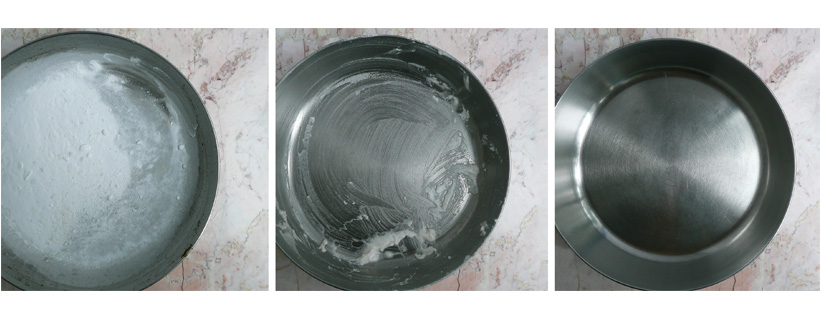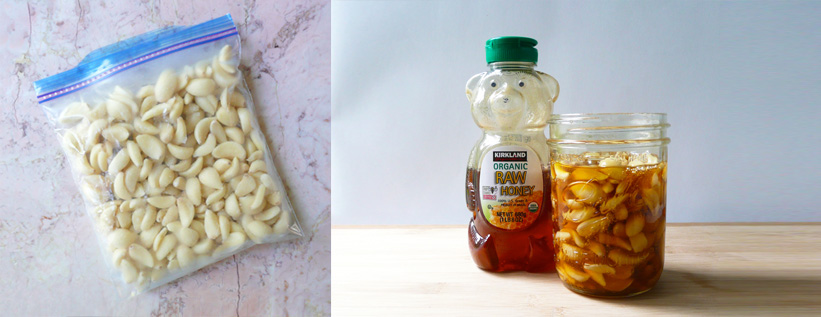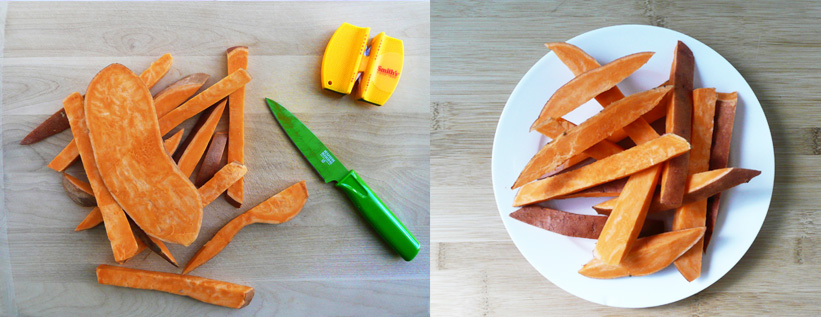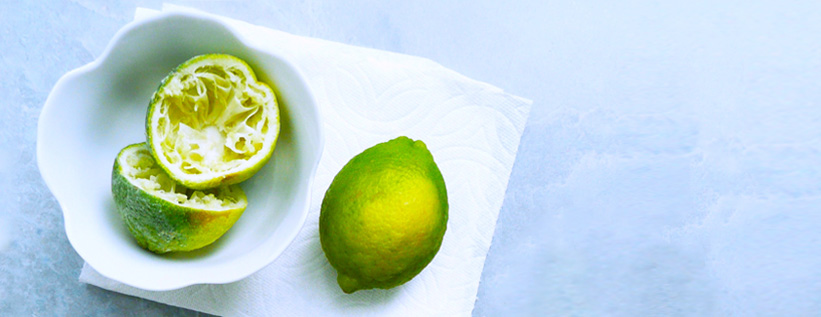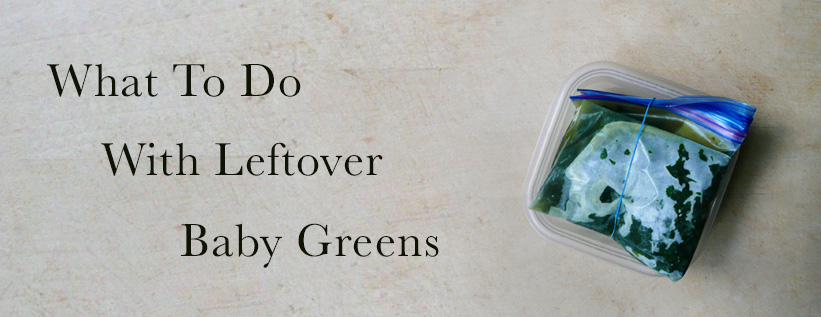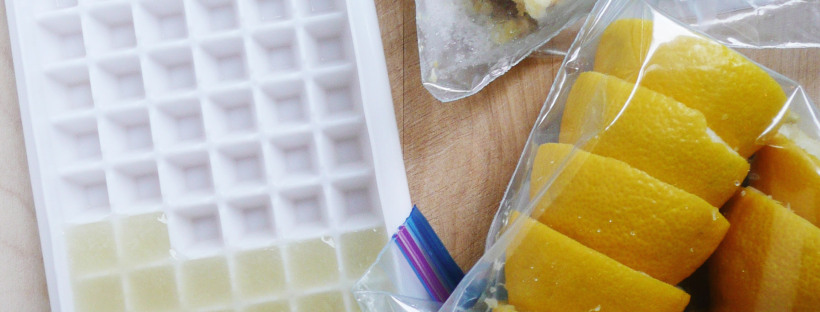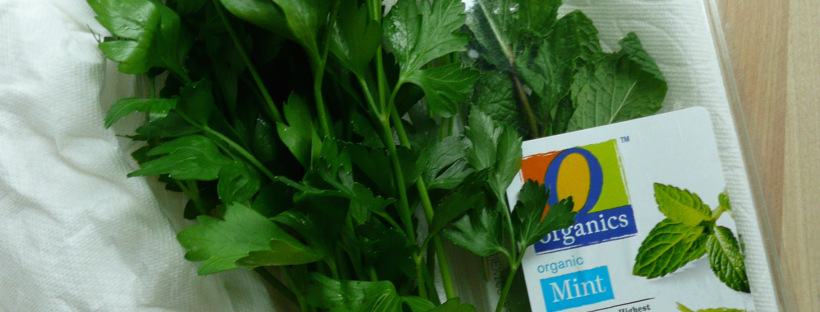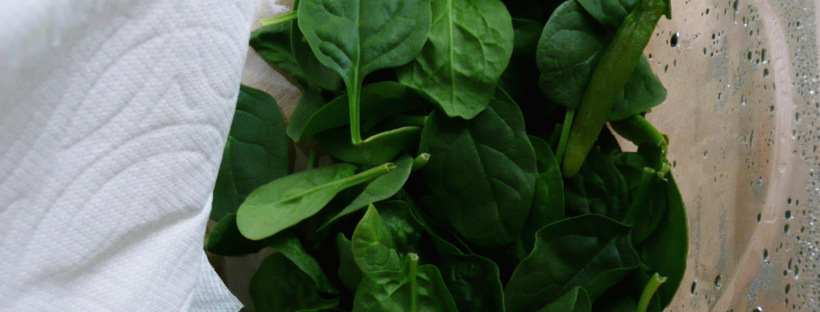My super easy trick for getting pots and pans sparkling clean without damaging the finish.
Tag: Kitchen Tip
What To Do With Leftover Garlic
Here are two ways of storing extra garlic cloves so that you can use them up when you're ready to.
My Technique / Tips for Cutting Sweet Potatoes
Sweet potatoes are one of my favorite vegetables, and they are super versatile, but they can be difficult to cut. Here are the tips and techniques that I use to make the job a little easier.
What To Do With Leftover Limes
If you ever find yourself with extra limes, here's how to freeze them so that you can enjoy them whenever you need them.
What To Do With Leftover Baby Greens
Sometimes when you go grocery shopping, you see a gigantic bag of organic baby greens for $5 and think "Hey! That's a great deal!" Once you get home though, you realize that there is no way that you're going to be able to eat that entire bag of baby greens before they go bad. But have no fear! There's a super easy way to get the most out of your purchase.
What To Do With Leftover Lemons – How To Freeze Lemons
How to make the most of your excess lemons. Easy trick to always have lemon juice and zest on hand when you need it.
Kitchen Tip – Non-Toxic Way to Clean a Kitchen Sink
A little baking soda, a few drops of dish soap, and a splash of vinegar will get your kitchen sink super clean without any harsh chemicals.
How to Store Fresh Herbs
Quick tip for keeping herbs fresh, and a few suggestions for easy ways to use up extra herbs in a hurry.
Kitchen Tip – Easy Way To Get The Cap Off A Vanilla Extract Bottle
If you've ever known the struggle of baking cookies and not being able to get the little cap off of the vanilla extract bottle, this one's for you.
How to Keep Baby Spinach Fresh for Longer
A super easy trick to make your baby spinach last as long as possible in your fridge.
